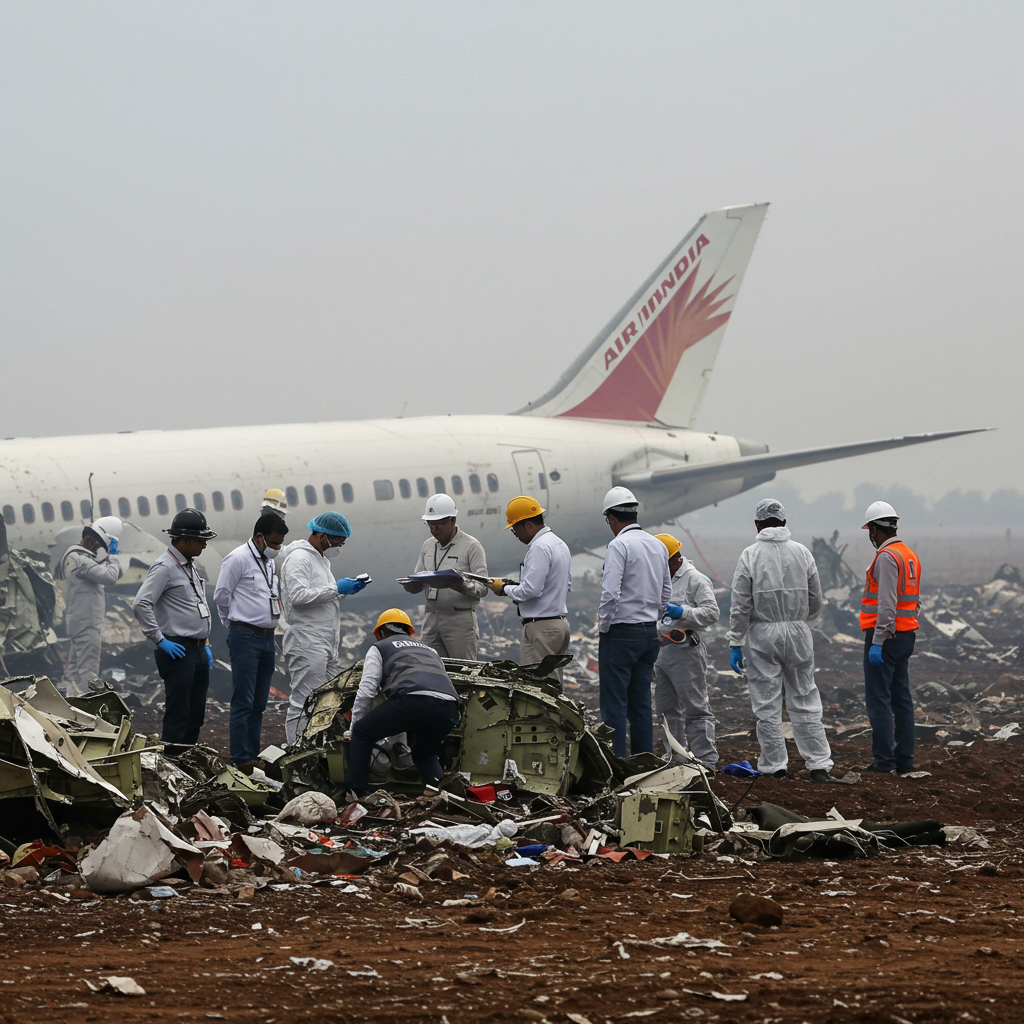A devastating Air India Dreamliner crash near Ahmedabad has claimed the lives of over 270 people, including a British family and many other UK citizens, sending shockwaves globally. This tragedy struck just as the airline, under the new ownership of the Tata Group, was undertaking an ambitious turnaround. With investigators from India, the US, and the UK now probing the cause, the incident poses a significant threat to Air India’s recent progress and future ambitions.
Air India’s Road to Recovery Under Tata
Under Tata’s helm since acquiring the airline from the government in 2022, Air India was showing signs of a resurgence. The state-owned carrier, previously plagued by neglect and financial woes, had begun reporting operating profits, improved revenues, and a reduction in customer grievances. While legacy issues like poor service standards, faulty in-flight entertainment, and delays hadn’t vanished entirely, they were largely viewed as transitional pains amidst complex operational streamlining and mergers.
Visible cosmetic improvements – like fresh livery and retrofitted interiors on some aircraft – alongside the introduction of new A350 aircraft on key routes and a historic large order for new planes, signaled momentum towards modernization. Earlier this year, Tata described this transformation as the “final climb phase” towards becoming a “world-class” airline.
The Devastating Impact and Loss of Confidence
The scale of the tragedy is immense. The crash, which occurred less than a minute after takeoff, claimed at least 270 lives. The process of identifying victims has been slow and painstaking, often requiring DNA matching due to the severity of the impact. Among those lost were the Nanabawa family, a British family returning home, and a young man from Leicester. Only one of the 242 passengers and crew aboard the plane survived.
This horrific event immediately triggered a predictable “knee-jerk reaction” among the public, with experts noting sentiments like “I’ll never fly Air India again.” This potential loss of passenger confidence, exacerbated by a recent spate of other reported incidents like engine snags and a hoax bomb threat, directly threatens to derail the fragile turnaround efforts already underway.
Challenges Mount: Experts Predict Delays and Scrutiny
Aviation analysts foresee a significant short-term impact, inevitably delaying the ambitious timeline management had envisioned. Resources will be heavily redirected towards non-operational complexities – dealing with insurance claims, legal challenges, and crucial reputation management – a process experts suggest could take months, potentially years.
Drawing a stark parallel, analyst Shukor Yusof notes it took Malaysia Airlines a full decade to return to profitability following its unprecedented crises in 2014, suggesting Air India will also require considerable time to “heal.” This setback means rivals are well-positioned to capture the advantage offered by India’s booming air travel market.
The operational strain is already evident, with Air India cancelling 15% of its international wide-body flights until mid-July for enhanced safety inspections and rising airspace restrictions.
Mark Martin, another aviation expert, highlights the intense global scrutiny the airline faces from authorities across the UK, US, and India. This will raise critical questions about operational practices, maintenance standards, and the state of its inherited older fleet. Risk advisor Mitu Samar Jha aptly describes the situation as a “triple whammy” for the Tata Group, forced to address concerns about the fleet acquired from the government, ongoing challenges potentially related to Boeing aircraft, and their own internal maintenance protocols.
The Investigation and Search for Answers
The complex investigation into the crash’s cause is now paramount. Authorities have recovered the crucial “black boxes” – the Cockpit Voice Recorder (CVR) and Flight Data Recorder (FDR) – which are expected to provide vital clues to reconstruct the final moments of the flight. India’s Aircraft Accident Investigation Bureau (AAIB) is leading the probe, supported by experts from the US National Transportation Safety Board (NTSB), Boeing, and the FAA, as well as UK teams.
The Indian government has also formed a high-level committee to examine the incident and propose new Standard Operating Procedures (SOPs) to prevent future disasters. A striking piece of potential evidence comes from a 17-year-old student who captured video of the Dreamliner shaking seconds before the crash; while this footage is crucial for investigators, the experience has left the young witness deeply traumatized.
Navigating the Crisis: Communication and Strengths
Despite the immense challenges, Air India is attempting to navigate the crisis. CEO Campbell Wilson has emphasized the airline’s full cooperation with investigators and its commitment to supporting victims’ families. Tata Group Chairman N Chandrasekaran reportedly urged employees to remain resolute and view the crisis as a catalyst for building a fundamentally safer airline.
Aviation consultant Sanjay Lazar points to Air India’s pool of skilled pilots and engineers as an asset. Furthermore, enhanced safety inspections mandated by Indian regulators on all the carrier’s Boeing 787 Dreamliners are intended to bolster passenger confidence. Lazar notes that historically, airlines become “ultra cautious” and meticulously adhere to procedures (“adds tons of locks”) following serious accidents. The airline also benefits from its strategic partnership and shareholder relationship with Singapore Airlines (SIA), widely recognized as a world-leading carrier. Experts believe SIA’s experience could be instrumental in helping Air India “nurse back to health.”
Ultimately, consistent and authentic communication about corrective measures and enhanced safety standards will be paramount for reputation recovery, preventing misinformation and regaining control of the narrative.
A Critical Juncture
The devastating Air India-171 crash represents a severe setback that significantly jeopardizes the hard-won momentum of the airline’s turnaround under Tata ownership. The path to recovery will undoubtedly be difficult and prolonged, requiring immense resources, painstaking investigation findings, and focused reputation management. While the tragedy has cast a deep shadow, steps are being taken internally and under regulatory oversight. The airline’s ability to weather this storm will depend heavily on the outcomes of the investigation, its commitment to enhanced safety, transparent communication, and leveraging its internal expertise and strategic partnerships. The ambition to transform Air India into a world-class carrier now faces its most critical test.




